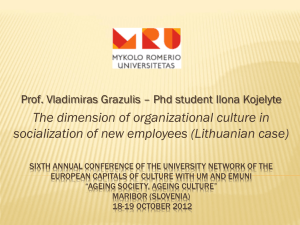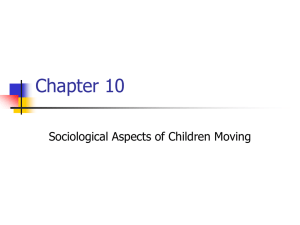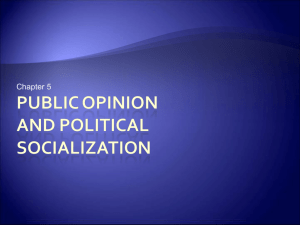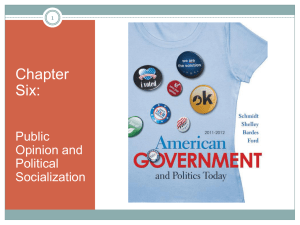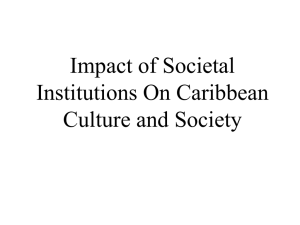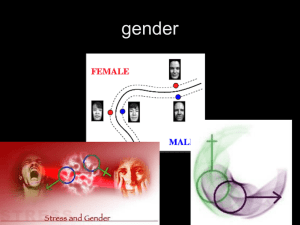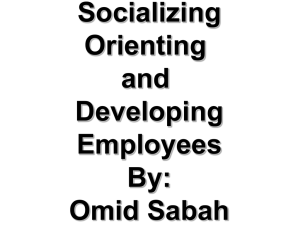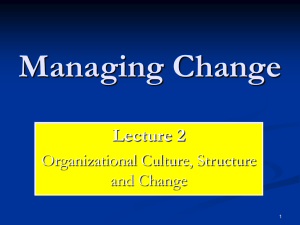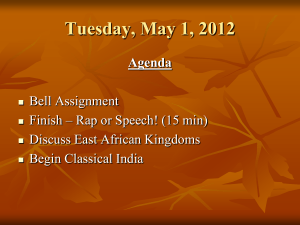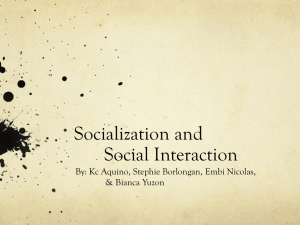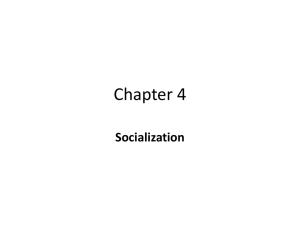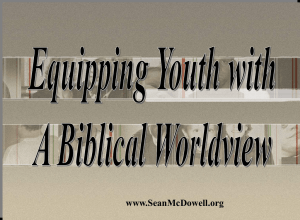hapter 10-Public Opinion
advertisement
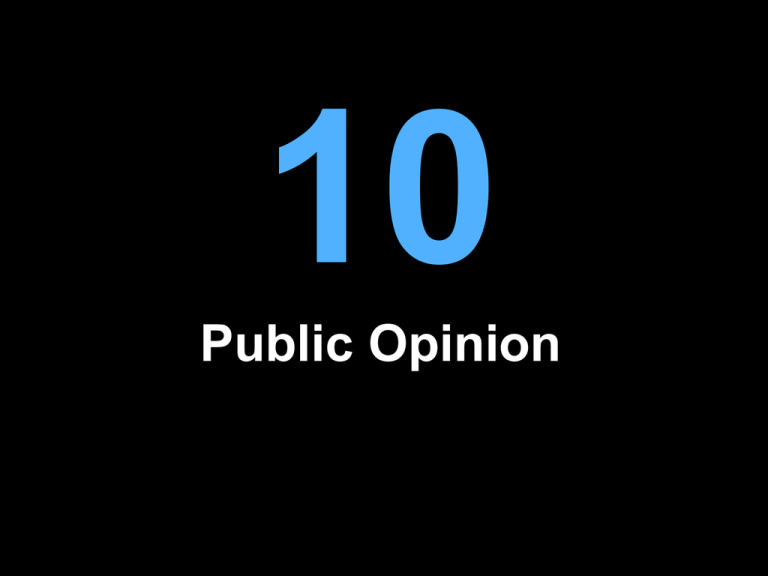
10 Public Opinion What is Public Opinion? • Citizens’ attitudes about political issues, leaders, institutions, and events • May be understood on two levels – Individual – What one person thinks about issues, leaders, institutions, and events – Aggregate – The accumulation of these individual expressions as expressed in polls, votes, town meetings, protests, etc. • Preferences, beliefs, and choices matter Preferences, Beliefs, and Choices • Preferences are shaped by economic self-interest and social or moral values; some preferences may be held more firmly than others. • Beliefs reflect how people understand the world and the consequences of actions. • The choices presented to us do not always yield a clear measure of our preferences or beliefs. Variety of Opinion • Americans do hold common opinions on some issues, like the legitimacy of the Constitution, but on most things the public does not hold a single view • What we’re interested in knowing: – Evaluations of individuals and institutions – Assessments of public policies – Assessments of current circumstances – Political orientations Clicker Question We can expect that public opinion will vary significantly over time on each of the following EXCEPT A. the president. B. environmental regulation. C. equality of opportunity. D. trust in government. Origins and Nature of Opinion • Individual opinions are a products of one’s personality, social characteristics, and interests. • Opinions are also shaped by institutional, political, and governmental forces that make it more likely we’ll hold some belief and less likely we’ll hold others. Self-Interest, Values and Identities • Economic interests – Government policies directly affect Americans’ financial wellbeing in a variety of ways • Values – Our philosophies about morality and justice impact our opinions and may even contradict our economic interests • Identities – Our race, religion, geographic origin, language, and partisan identification impact our opinions Social Origins of Preferences • Preferences are developed through social lives – upbringing, schooling, religion, and experiences with coworkers and friends • This is called political socialization – The induction of individuals into the political culture; the process of learning the underlying beliefs and values on which the political system is based Agents of Socialization • The social institutions, including families and schools, that help shape individuals’ basic political beliefs and values • Important agents of socialization: – Family – Education – Social Groups – Political Conditions Agents of Socialization: Family • Most people acquire their initial orientation to politics from their family • Parents don’t necessarily teach their kids about politics but kids absorb the political conversations around them and often the political orientation that comes with it Is your partisan affiliation the same as your parents’? A.Yes B. No Agents of Socialization: Education • Some values (liberty, equality, and democracy for instance) are impressed on students continuously throughout their education • But higher levels of educational attainment are associated with changes in political beliefs Education and Public Opinion Do you think higher education has a liberalizing effect? A. Yes B. No http://www.southparkstudios.com/clips/154822 /college-know-it-all-hippies Agents of Socialization: Social Groups • We all belong to groups – Some are voluntary, like political parties, unions, and occupational groups – Some are involuntary, like race and gender • Groups are another source of divergent preferences • Some of these preferences are based on self-interest but most are not Disagreement Among Blacks and Whites Changing Partisan Division in the Latino Community Religious Groups and Same-Sex Marriage The Gender Gap • A distinctive pattern of voting behavior reflecting the differences in views between women and men • The gender gap has been an enduring feature of American elections for some time now, with women consistently voting more Democratic and men voting more Republican Gender Gap on War and Peace Agents of Socialization: Political Conditions • The conditions under which individuals and groups come of political age also shape political orientation • Similarly, the views of individuals and groups change as the political conditions change Political Ideology • The set of underlying orientations, ideas, and beliefs through which people understand and interpret politics • Most people describe their ideology as liberal or conservative Conservatives and Liberals Conservatives • Support the social and economic status quo • Suspicious of efforts to introduce new political formulas and economic arrangements • Believe that a large and powerful government poses a threat to citizens’ freedoms Liberals • Support political and social reform • Extensive government intervention in the economy • Expansion of federal social services • More vigorous efforts on behalf of the poor, minorities, and women • Greater concern for consumers and the environment Public Opinion and Political Knowledge • Few Americans devote sufficient time, energy, or attention to politics to really understand all the issues • The costs of gathering information may be high and the benefits may be low • We can think of examples, however, where low levels of political information can be harmful to groups of people Shaping Opinion: Government and Politicians • All governments attempt to influence citizens’ beliefs but their efforts are counteracted by interest groups, media, and politicians opposed to those in power • Presidents have been actively “going public” for decades now to influence how the public perceives their policy initiatives • They are not always successful, however Shaping Opinion: Private Groups • Following the rationality principle, groups and individuals seek to influence latent, unorganized individuals to support their cause • Groups and individuals with more money, institutional support, and skill will have more success Shaping Opinion: Media • The mass media are the conduits through which most politically relevant information flows to the public • Traditional media sources – newspapers, radio, and television – are supplemented today by the Internet and social media • We learn from the media actively – seeking out news – and passively – absorbing news through entertainment Media Effects: AgendaSetting, Priming, and Framing • Agenda-Setting: The power to bring attention to particular issues and problems • Priming – The process of preparing the public to take a particular view of an event or a political actor • Framing – The power of the media to influence how events and issues are interpreted Clicker Question A decision to lead a broadcast with a story about a high-profile murder case rather than the president’s trip to the Middle East is an example of a media effect called A. agenda setting. B. priming. C. framing. Measuring Public Opinion: Selection Bias • A poll is a scientific instrument for measuring public opinion • Because we usually cannot ask everyone whose opinion we want, we must start by finding a representative sample of the larger population • Finding a representative sample is not easy and we have to avoid selection bias Measuring Public Opinion: Sample Size • The reliability of a poll is a function of sample size • The larger the sample size, the less the chance that the result will be the result of sampling error • However, larger samples are more expensive to construct Two Pollsters and Their Records Measuring Public Opinion: Survey Design • Even with a large, representative sample, a poll may provide a misleading result or measurement error • Measurement error is the failure to identify the true distribution of opinion within a population because of errors such as ambiguous or poorly worded questions The Questions Matter Measuring Public Opinion: Illusion of Salience • A salient interest is an attitude or view that is especially important to the individual holding it • By reporting results in quantitative terms, polls can give the impression that something is important when it actually is not. This is the illusion of salience How Does Public Opinion Influence Government Policy? • Four important ways: – Electoral accountability – Building coalitions: Public bills are more likely to pass if they have public support. – Input in rule making and legal decisions – Shaping public opinion: Political leaders’ behavior is changed as they seek to shape public opinion.
